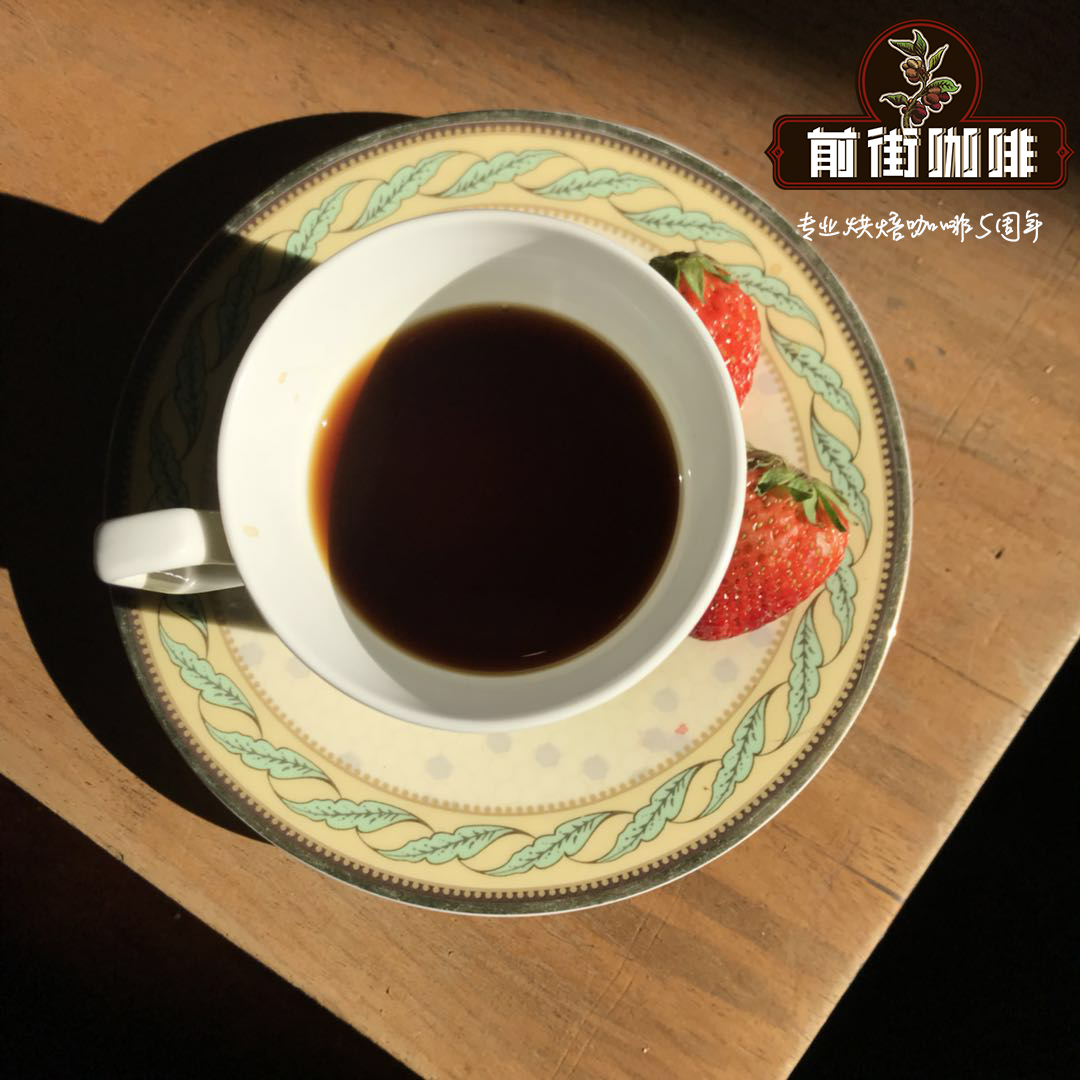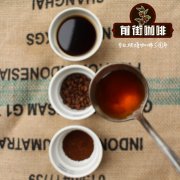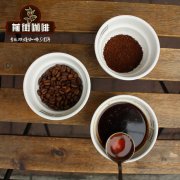FAQ Certification Kenya AA level SL28/SL34 | Gatongboya Gatomboya\ Mutwewathi\ Gaku

Professional coffee knowledge exchange more coffee bean information please follow the coffee workshop (Wechat official account cafe_style)
FAQ certification Kenya AA level SL28/SL34 | Kadonboya Gatomboya\ Mutwewathi\ Gakuyuini processing plant selected batch?
Three well-known treatment plants in Kenya are responsible for the production of raw bean water treatment. The names of the water treatment plants are as follows:
Gatomboya Coffee factory
Mutwewathi coffee factory
Gakuyuini coffee factory
The first water treatment plant, Gatomboy, is well known in the coffee industry in Kenya. Seven treatment plants in Kenya are listed as the best treatment plants in the world (The World's Best Factories). Gatomboy is owned by Barichu Co-operative Society in Nyeri, the most famous boutique coffee producing area in Kenya, and in the 2016 cup test record of Coffee Review Company in the United States. The beans produced by this processing plant are baked by roasters and sent to Coffee Review for cup testing, with a score of 96 points, making it one of the seven well-known processing plants in Kenya, and these seven well-known processing plants are also ranked as one of the best coffee processing plants in the world (The World's Best Factories).
Product name: Kenya AA FAQ (selected batches of three Gatomboya Mutwewathi Gakuyuini processing plants)
Country: Kenya
Producer: collection of local small farmers
Varieties: Bourbon, SL28, SL34
Grade: Super AA FAQ
Altitude: 1500 to 2km
Treatment: washing treatment
Harvest time: NumberA
Flavor features: orange, ripe fruit, lemon, herbal, creamy, full-bodied, obvious sweetness, orange, ripe fruit, greasy on the palate, Body thick, rich and rich, moderate acidity, unique drupe aroma, sweet aftertaste, showing a strong chocolate syrup flavor.
Introduction:
No country in the world attaches so much importance to the production of high-quality coffee as Kenya, so Kenya can be regarded as the best model student for coffee producers in the world, because all Kenyan coffee must be uniformly purchased and graded by the Kenya Coffee Bureau (Coffee Board of Kenya, CBK) set up by the government every Tuesday. Open in the capital by the officially established Nenobi Coffee Exchange (the Nairobi Coffee Exchange), this open system managed by the government encourages more than 570000 small coffee farmers across Kenya to get good prices as long as they are of good quality. In fact, there is still a lot of support for the efforts made by the Kenyan government. The government provides a large number of small coffee farmers with the skills to grow coffee, tutoring nearly 300 agricultural transportation and marketing cooperatives (a bit like Taiwan agricultural production and marketing classes) for better raw bean handling, and the Kenya Coffee Bureau (CBK) devotes itself to the production, quality research, sales and even financial guidance of the coffee industry. It has created the unparalleled charm of the quality and flavor of Kenyan coffee.
Coffee buyers around the world love it, and Kenyan coffee is also very popular in Taiwan's coffee market. Surrounded by Mount Kenya (MT. KENYA, volcano) and Elgang Mountain (MT. Elgon), the more famous producing areas are Meru, Thika, Nyeri, Nakuru, Embu and so on. Kenya's terrain is complex and varied, with highlands, deserts, canyons and grasslands. Coffee producing areas are spread throughout the central and southwestern and eastern original Michael areas at elevations of 1000 to 2500, such as Mount Kenya in the middle and Aberdare Zone in the west, Nyanza, Kasii and Bungoma in the west, and Kericho and Nakuru in the east. The treatment method of raw bean is mainly water washing, the grading method is graded by particle size, and its practical value is determined by cup test. The highest grade coffee beans are AA (large granulated beans left on the 7.2mm sieve), A (the second largest granulated beans left on the 6.8mm sieve), B (medium granulated beans left on the 6.2mm sieve), C (all small granules less than B), PB (oval granulated beans), and TT and T beans that are too light and too small. Grade An and B beans are mixed and exported, called AB. The Kenyan authorities (CBK) are very demanding on coffee beans, using consistent packaging, coupled with good quality and good texture, so coffee lovers will never forget to enjoy a cup of Kenyan coffee.
The history of coffee cultivation in Kenya can be traced back to the end of the 19th century. Coffee trees were introduced from neighboring Ethiopia in the north and improved by their own varieties. At present, the common varieties are Bourbon, Kents,SL34, SL28, Typica and Riuri 11. Now about 90% of the coffee varieties are SL34 and SL28. The new variety Batian published in 2007 has not been planted in large quantities. The vast majority of Kenyan coffee is grown organically without certification because of the use of improved planting techniques and the rare use of chemical pesticides or herbicides. All Kenyan premium coffee is washed, and the low-grade products of sun-dried beans (mashed beans 39th buni) are only available for local use.
This batch of Kenya AA FAQ selected batch coffee flavor features: with orange, ripe fruit, lemon, herbal, cream flavor full-bodied, sweetness, orange, ripe fruit, taste with greasy coating, Body thick, rich and rich taste, moderate acidity, unique drupe flavor, sweet finish, showing a strong chocolate syrup flavor.
Cooking in front of the street:
Filter cup: Hario V60
Water temperature: 90 degrees
Degree of grinding: small Fuji 3.5
Cooking methods: the ratio of water to powder is 1:15, 15g powder, the first injection of 25g water, 25 s steaming, the second injection to 120g water cut off, waiting for the powder bed water to half and then water injection, slow water injection until 225g water, extraction time about 2:00
Analysis: using three-stage brewing to clarify the flavor of the front, middle and back of the coffee. Because the V60 has many ribs and the drainage speed is fast, it can prolong the extraction time when the water is cut off.
、
Important Notice :
前街咖啡 FrontStreet Coffee has moved to new addredd:
FrontStreet Coffee Address: 315,Donghua East Road,GuangZhou
Tel:020 38364473
- Prev

Guatemala Flower God brand La Flor Belacamona Manor Zelaya family washed bean flavor?
Professional coffee knowledge exchange more coffee bean information please follow the coffee workshop (Wechat official account cafe_style) Guatemala Flower God brand La Flor Bella Camona Manor Zelaya family washed bean flavor? Naming of Flower God Coffee: @ 1st: technical support provided by Laminita (Raminita Manor) in Costa Rica + La Flor named in Spanish (full
- Next

Kenya selected batches | AA grade NFCS cooperative coffee beans in Kamwangi production area of Kirinyaga province
Professional coffee knowledge exchange more coffee bean information please follow the coffee workshop (Wechat official account cafe_style) Kenya selected batches | Kirinyaga province Kamwangi production area AA grade NFCS cooperative coffee bean flavor? There is no shortage of excellent and wonderful batches in Kenya, but the harvest has shrunk sharply, with many buyers chasing after price, leading to a rise in transaction prices and a turnover rate almost every week.
Related
- Detailed explanation of Jadeite planting Land in Panamanian Jadeite Manor introduction to the grading system of Jadeite competitive bidding, Red bid, Green bid and Rose Summer
- Story of Coffee planting in Brenka region of Costa Rica Stonehenge Manor anaerobic heavy honey treatment of flavor mouth
- What's on the barrel of Blue Mountain Coffee beans?
- Can American coffee also pull flowers? How to use hot American style to pull out a good-looking pattern?
- Can you make a cold extract with coffee beans? What is the right proportion for cold-extracted coffee formula?
- Indonesian PWN Gold Mandrine Coffee Origin Features Flavor How to Chong? Mandolin coffee is American.
- A brief introduction to the flavor characteristics of Brazilian yellow bourbon coffee beans
- What is the effect of different water quality on the flavor of cold-extracted coffee? What kind of water is best for brewing coffee?
- Why do you think of Rose Summer whenever you mention Panamanian coffee?
- Introduction to the characteristics of authentic blue mountain coffee bean producing areas? What is the CIB Coffee Authority in Jamaica?

